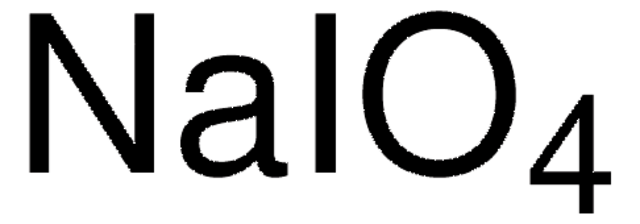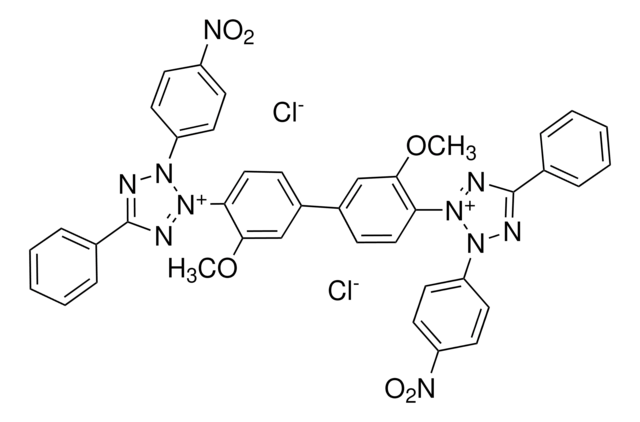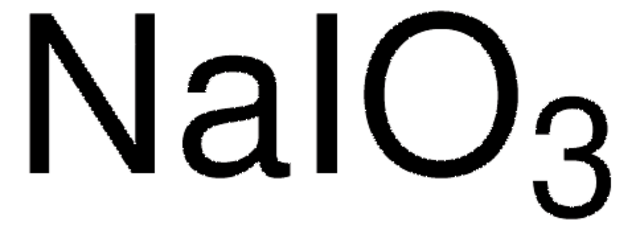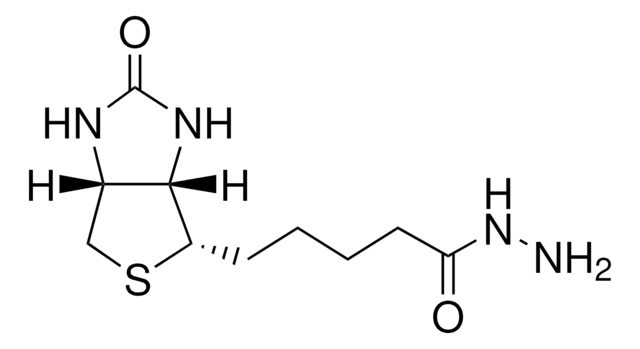S1878
Sodium (meta)periodate
≥99.0%
Sinónimos:
Sodium periodate
About This Item
Productos recomendados
Quality Level
assay
≥99.0%
form
powder
reaction suitability
reagent type: oxidant
pH
3.5-5.5 (25 °C, 107 g/L)
solubility
H2O: 50 mg/mL
SMILES string
[Na+].[O-]I(=O)(=O)=O
InChI
1S/HIO4.Na/c2-1(3,4)5;/h(H,2,3,4,5);/q;+1/p-1
InChI key
JQWHASGSAFIOCM-UHFFFAOYSA-M
¿Está buscando productos similares? Visita Guía de comparación de productos
General description
Application
- 1,2-diols to aldehydes or ketones via oxidative cleavage. Sulfides to sulfoxides in the presence of phase transfer catalysts.
- Diaryl, dialkyl, and aryl alkyl selenides to the respective selenoxides.
- Phenols and their derivatives to corresponding quinones.
- Acylphosphoranes to α,β-dicarbonyl compounds.
It can also be used in the:
- Selective alkene epoxidation and alkane hydroxylation,·
- Oxidation of carbohydrates.
- Iodination of aromatic compounds.
Features and Benefits
signalword
Danger
hcodes
Hazard Classifications
Aquatic Acute 1 - Aquatic Chronic 1 - Eye Dam. 1 - Ox. Sol. 1 - Skin Corr. 1C - STOT RE 1
target_organs
Thyroid
Storage Class
5.1A - Strongly oxidizing hazardous materials
wgk_germany
WGK 3
flash_point_f
Not applicable
flash_point_c
Not applicable
Elija entre una de las versiones más recientes:
¿Ya tiene este producto?
Encuentre la documentación para los productos que ha comprado recientemente en la Biblioteca de documentos.
Los clientes también vieron
Nuestro equipo de científicos tiene experiencia en todas las áreas de investigación: Ciencias de la vida, Ciencia de los materiales, Síntesis química, Cromatografía, Analítica y muchas otras.
Póngase en contacto con el Servicio técnico












